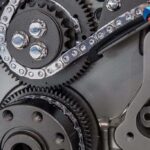The story of Bentley takes a fascinating turn when considering its relationship with Volkswagen (VW). While Bentley’s legacy is steeped in British luxury and performance, its modern resurgence is undeniably linked to German engineering and investment from VW. This exploration delves into the evolution of Bentley, highlighting the pivotal role of VW in restoring this iconic brand to its former glory and beyond.
Bentley’s journey began with remarkable independence and a reputation for powerful, driver-focused cars. However, the acquisition by Rolls Royce in 1931 marked a significant shift. In the pursuit of Fordist production efficiencies during the 1930s, Bentley gradually moved towards standardized components, a departure from its bespoke engineering philosophy. While craftsmanship remained, the distinctive Bentley characteristics of raw performance and dynamism were somewhat diluted as shared components with Rolls Royce became more prevalent. Despite these changes, Bentley, leveraging its refined build quality, navigated the challenging economic landscape of the era. Initially, Bentley maintained a degree of separation, with pre-WWII models retaining unique engines and chassis distinct from Rolls Royce.
Post-war financial pressures intensified the integration with Rolls Royce. The move to the new Crewe factory in 1946 saw the introduction of models like the MK VI. However, by 1951, models like the Rolls Royce Silver Dawn, virtually identical, began overshadowing Bentley offerings. The Type R Continental coupe (1952-1955) provided a final spark of distinctiveness before Bentley became increasingly derivative of Rolls Royce designs for the next three decades. This period witnessed a gradual decline in Bentley’s independent brand identity and market significance.
A dramatic turning point arrived in 1980 when Vickers plc, an armaments conglomerate, acquired Rolls Royce Motor Cars Ltd. Vickers recognized the untapped potential of the Bentley brand and initiated a revival, starting with the Bentley Mulsanne Turbo in 1982. This model, while sharing similarities with the Rolls Royce Silver Spirit, featured a crucial distinction: a turbocharger boosting power by 50% to an impressive 300 horsepower. This marked the birth of the fastest Bentley to date and ignited a brand renaissance. The Bentley Eight (1984), aimed at competing with Mercedes and BMW, and the Mulsanne Turbo R (1985) followed, signaling a new era. Bentley rediscovered its sporting heritage, driving substantial growth. Bentley’s share of Rolls Royce production exploded from under 5% to over 50% between 1983 and 1989. By 1992, Bentley sales surpassed Rolls Royce two to one. Within a decade, Bentley had re-emerged as the dominant brand, particularly with its striking coupes of the 1990s, once again embodying the fusion of luxury and performance that defined its signature. This resurgence paved the way for further flourishing under Volkswagen’s ownership.
Volkswagen Group’s acquisition marked another transformative phase for Bentley. Renamed Bentley Motors Ltd. in 2002, the company benefited immensely from VW’s strategic reintegration of core competencies that had been outsourced under Vickers. Crucially, this included bringing V8 engine production back to Crewe from Vickers Engineering, granting Bentley engineers direct control over powertrain development once more. VW demonstrated its confidence in Bentley’s future and workforce by investing DM 1.1 billion between 1999 and 2003 in factory modernization and new product development.
The Arnage model exemplifies VW’s impact. Initially developed pre-acquisition as the Arnage Green Label, VW’s intervention led to a rapid transformation into the Red Label within a year. This revision featured enhanced suspension, increased rear space, and greater power. Bentley engineers replaced the BMW engine with a more potent V8, leading to a 50% sales surge in 2000. The Arnage T, debuting at the 2002 North American International Auto Show in Detroit after over two years of fundamental redesign leveraging VW’s technical expertise, showcased the culmination of this effort. The enhanced design rigidity and the modified V8, now producing 456 hp and accelerating the Arnage to 100 km/h in just 5.5 seconds, demonstrated the powerful synergy between Bentley’s heritage and VW’s technological prowess. The “Bentley Vw” partnership became synonymous with a new chapter of innovation and success for the British marque.
In conclusion, the narrative of Bentley is one of evolution, challenges, and ultimately, resurgence. While its early history is defined by British craftsmanship and engineering, the brand’s modern renaissance is inextricably linked to Volkswagen. VW’s strategic investments, technological contributions, and commitment to Bentley’s heritage have been instrumental in revitalizing the marque. The “bentley vw” collaboration has not only restored Bentley to its former glory but has propelled it into a new era of luxury and performance, proving that sometimes, a fusion of different automotive cultures can create something truly exceptional.

